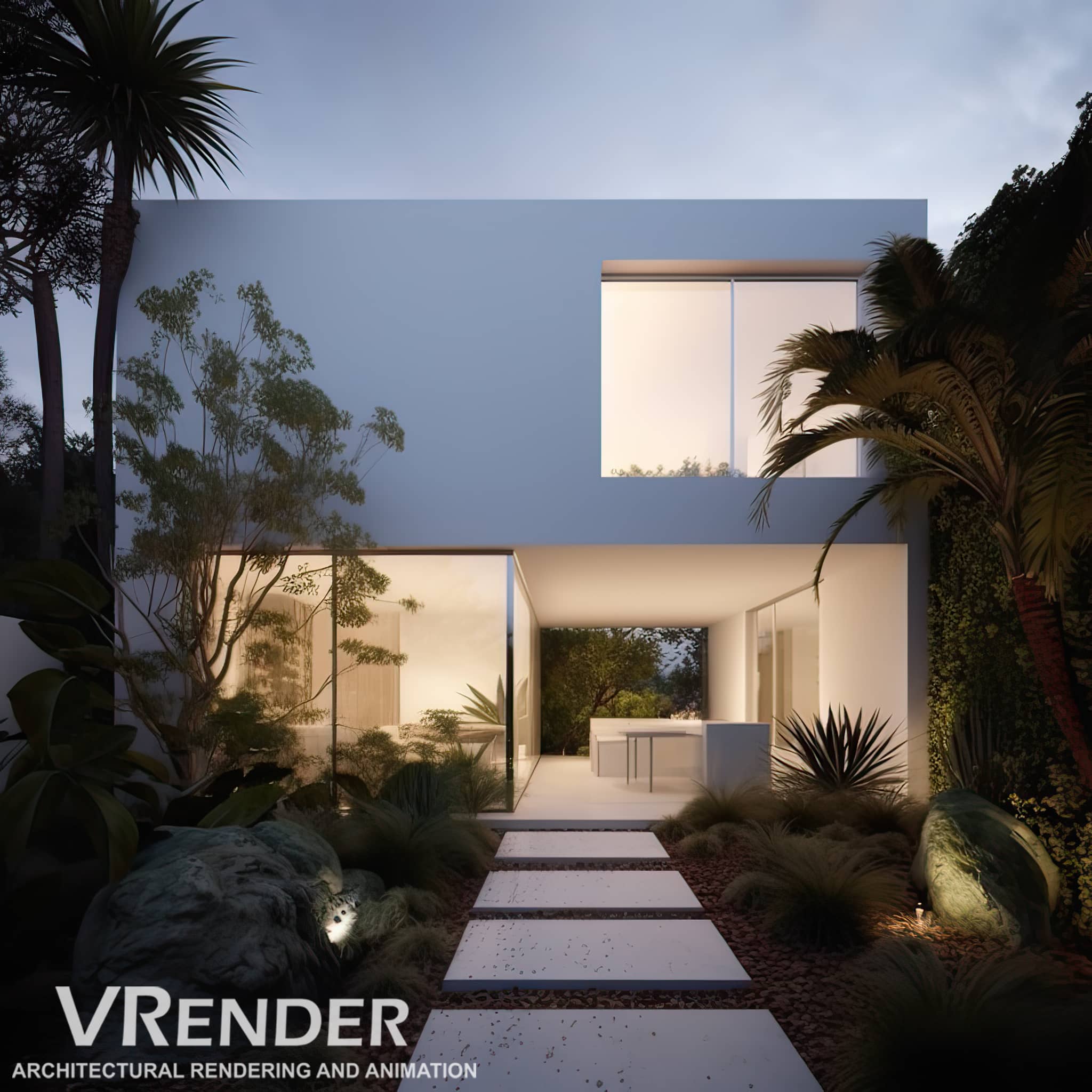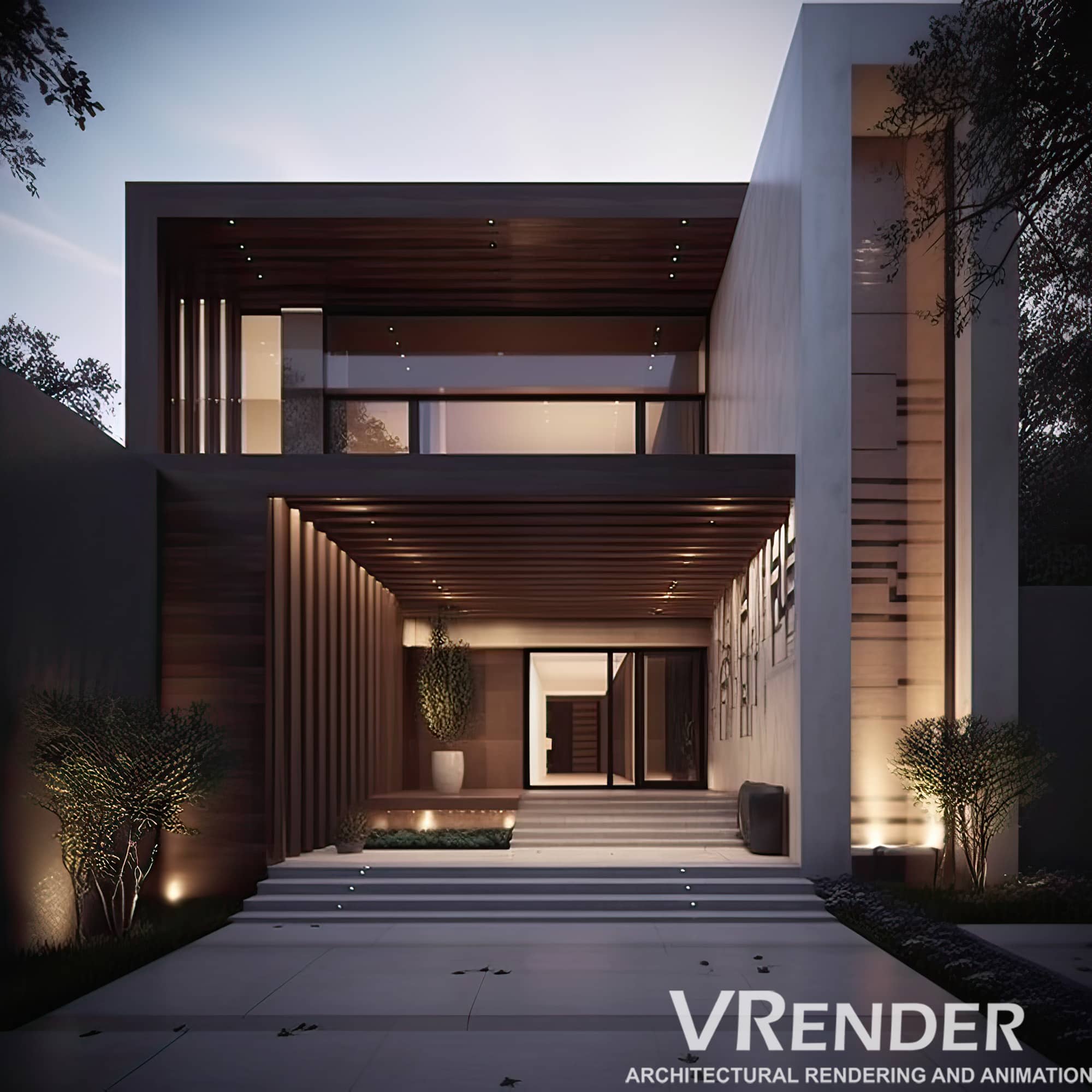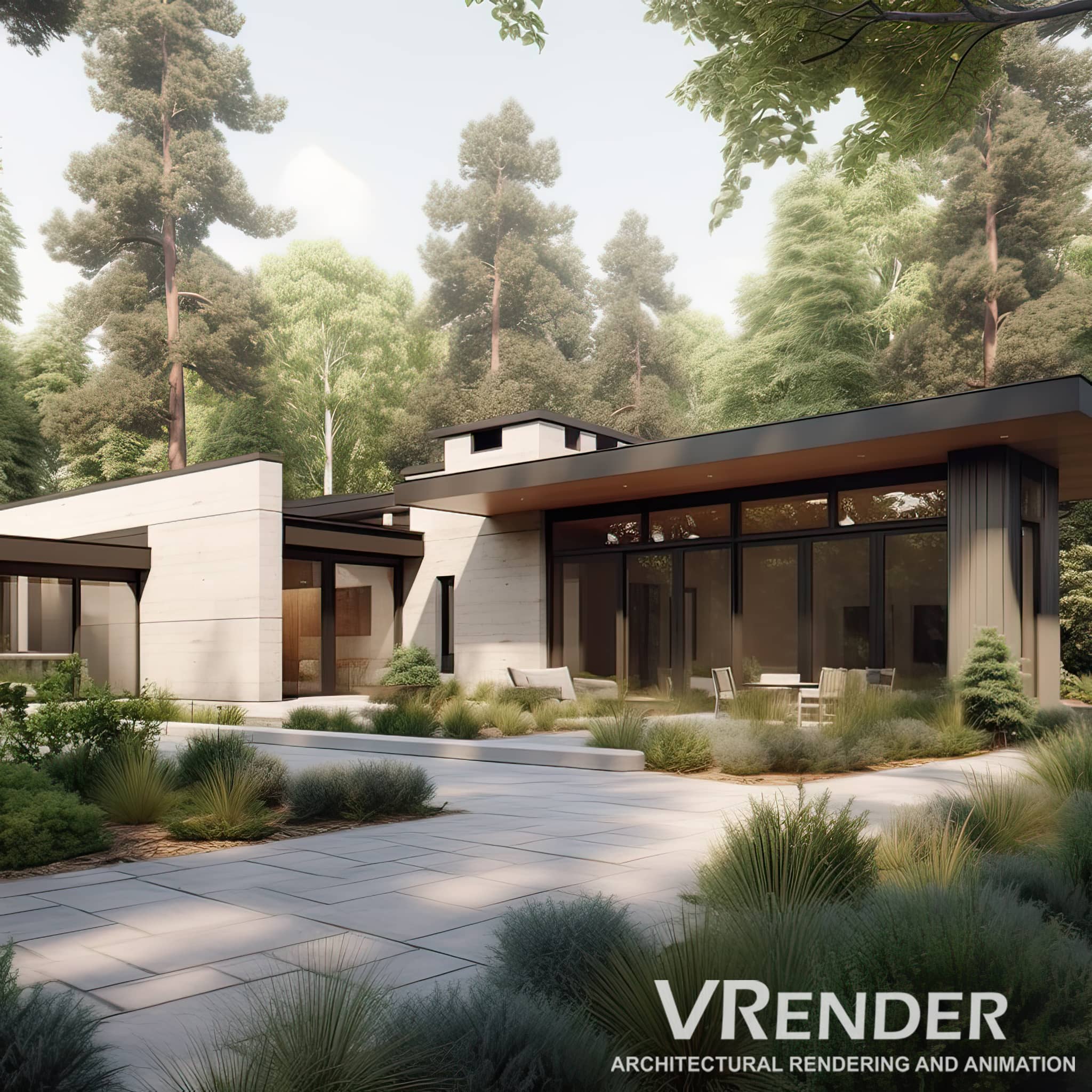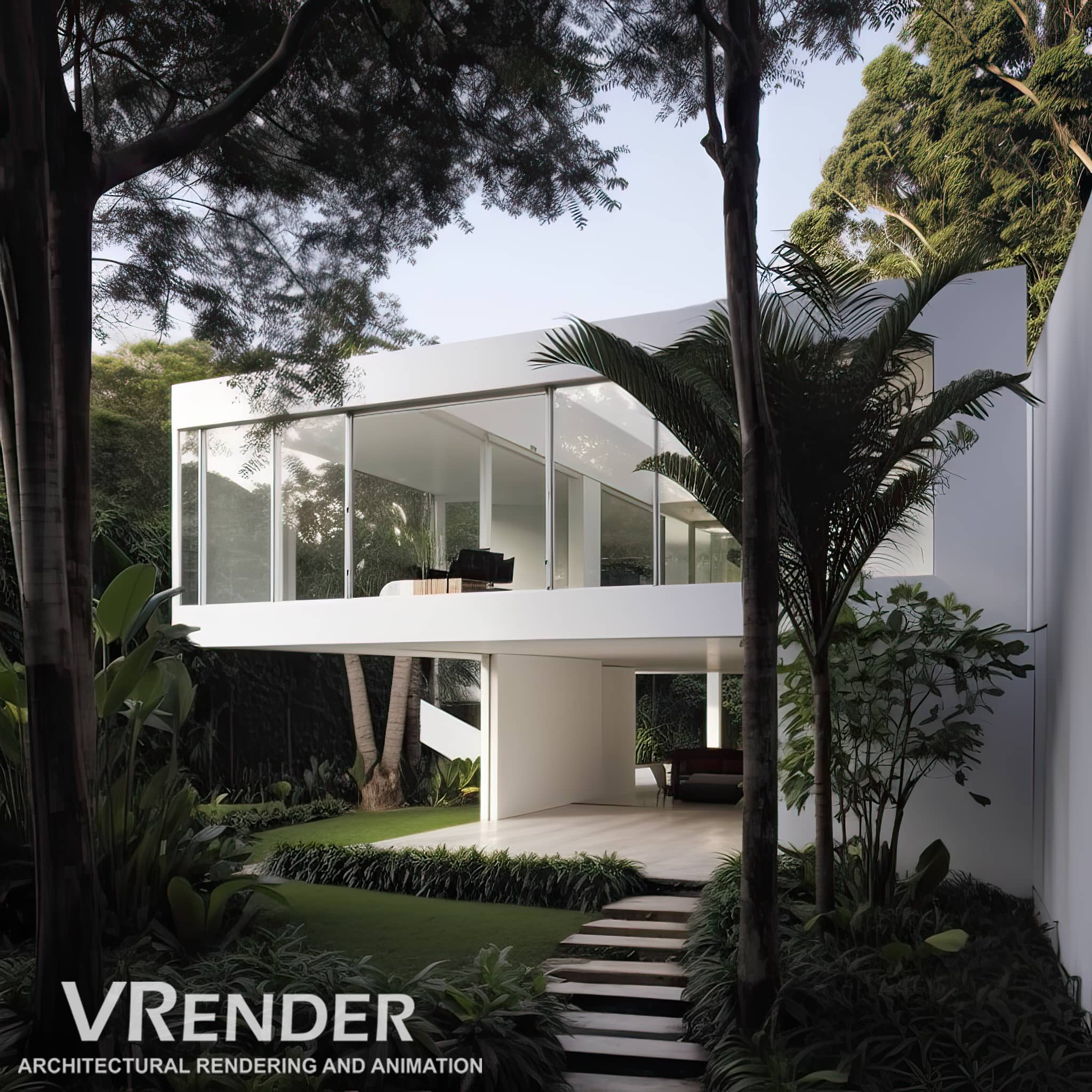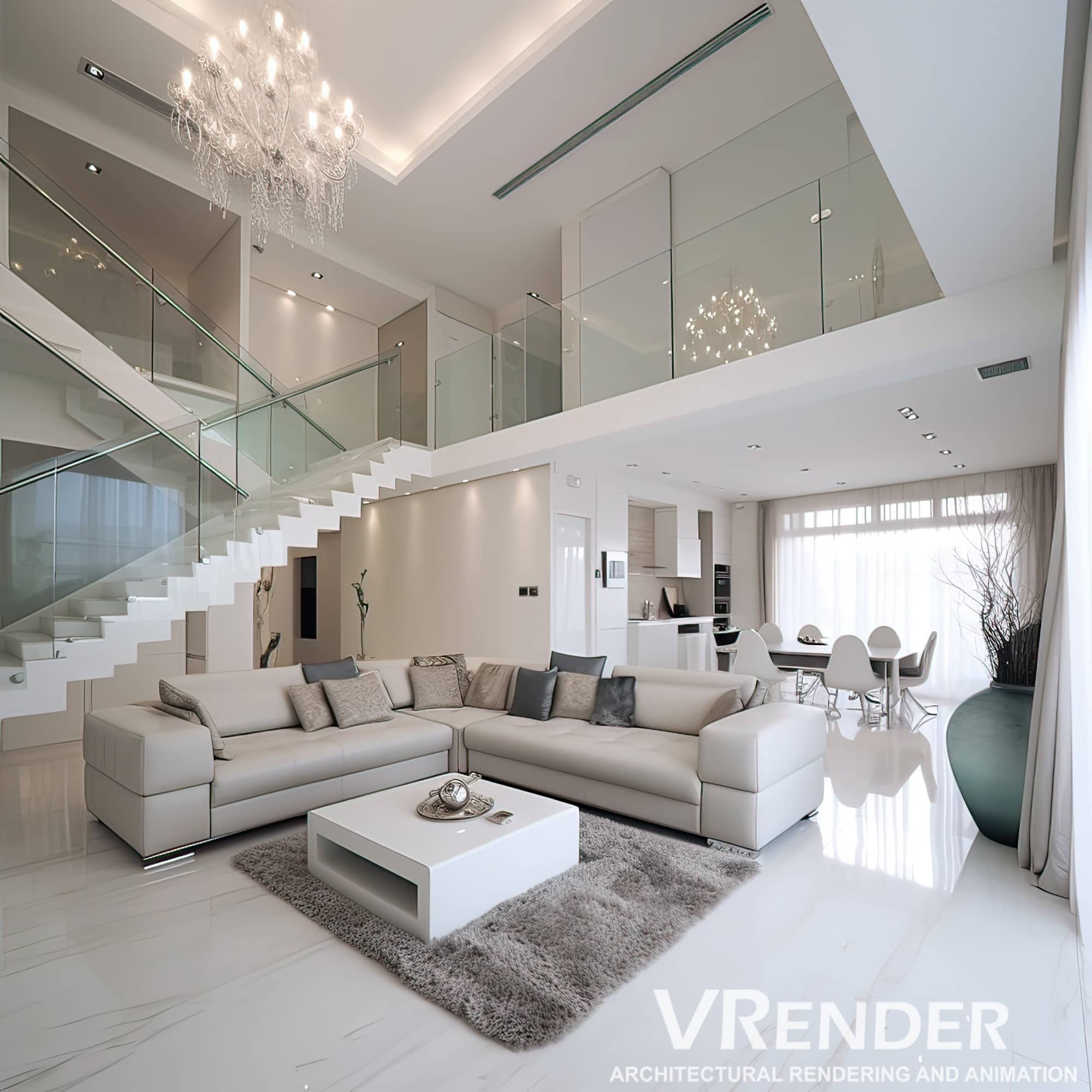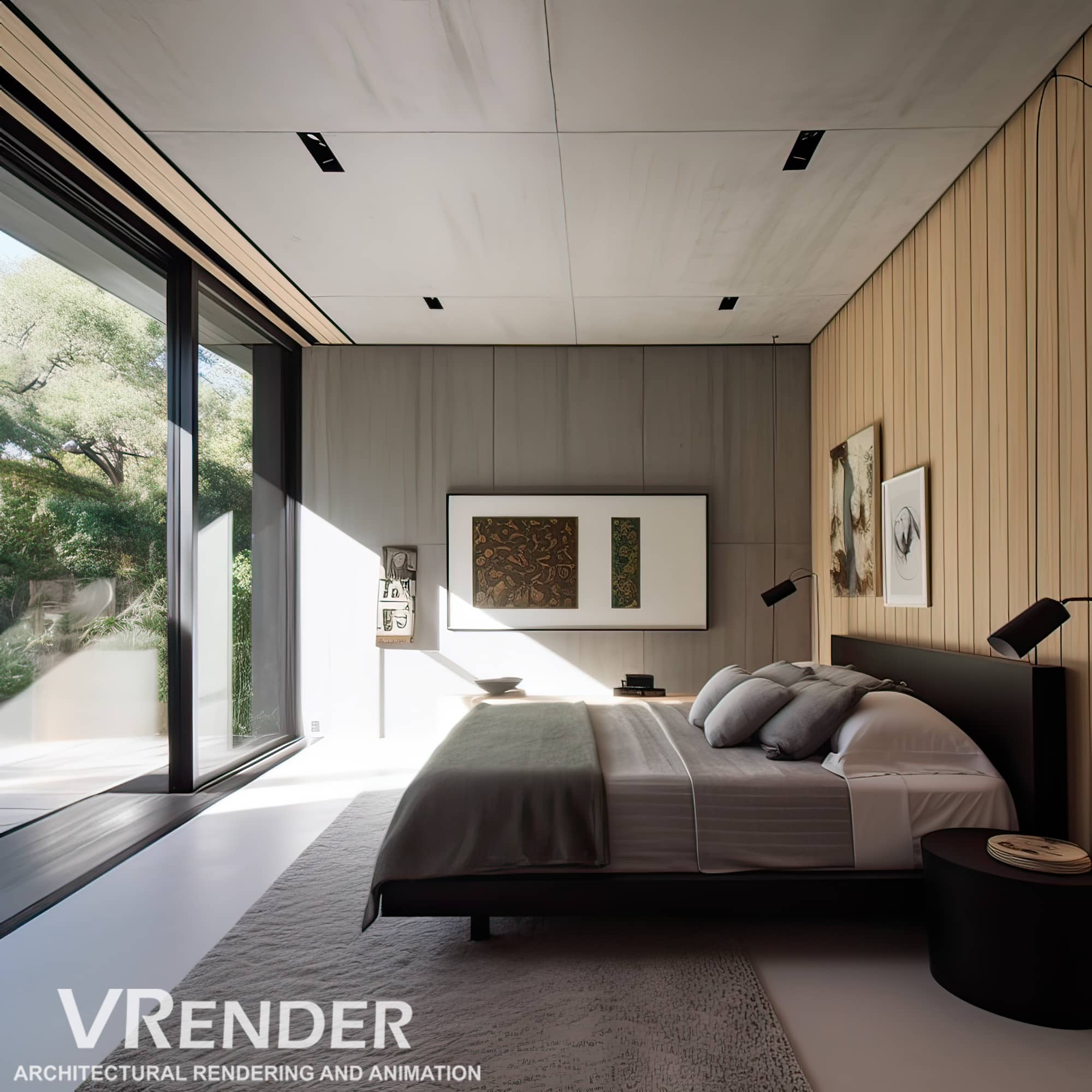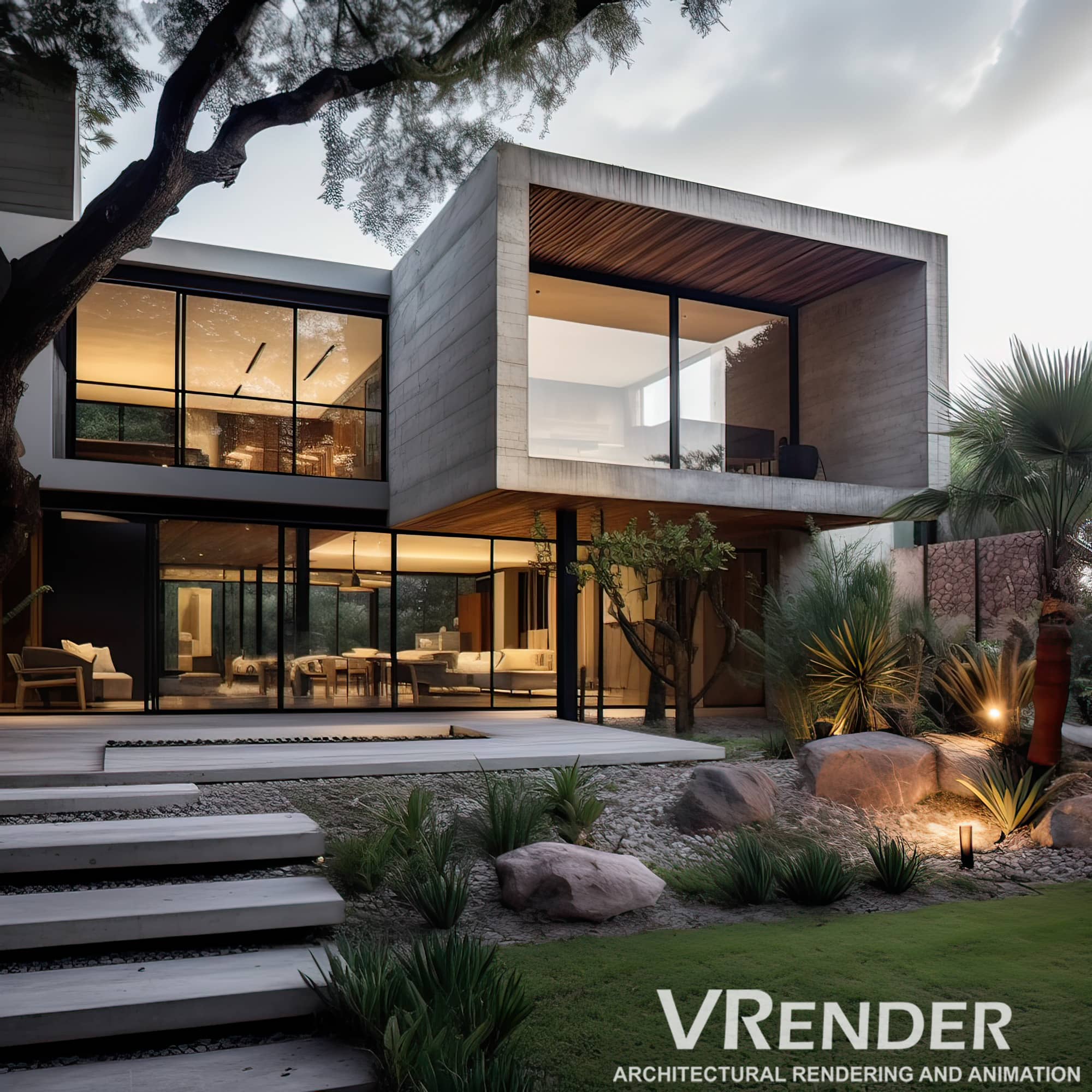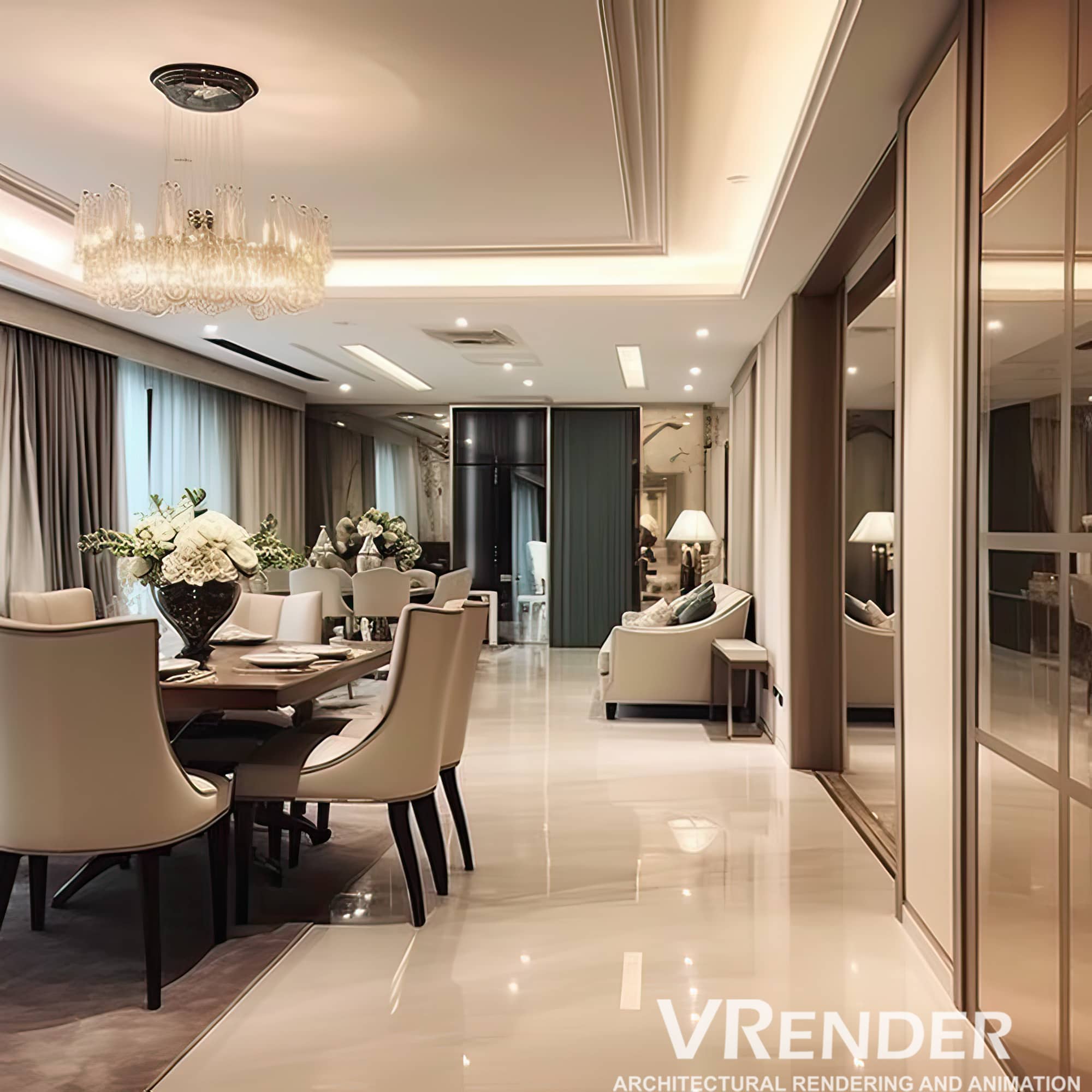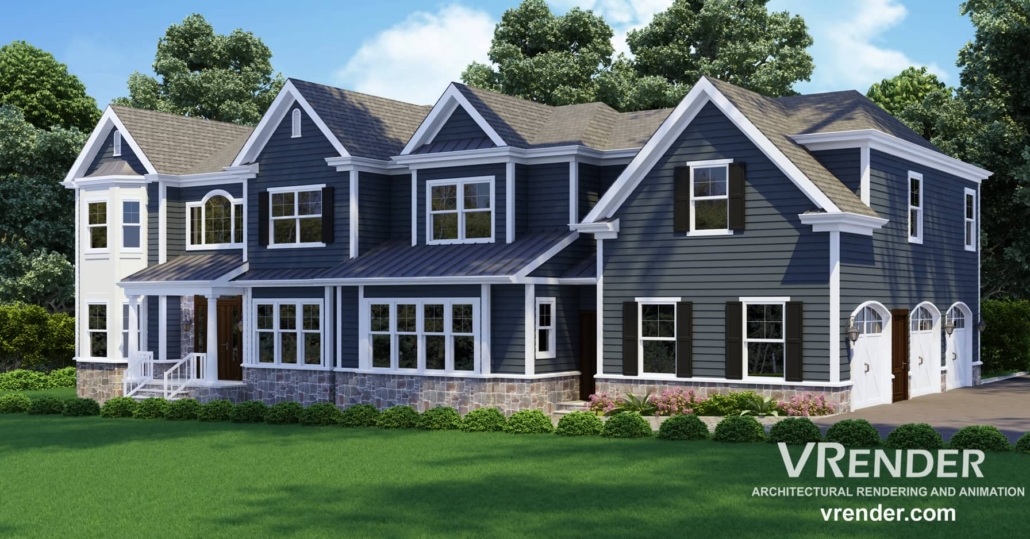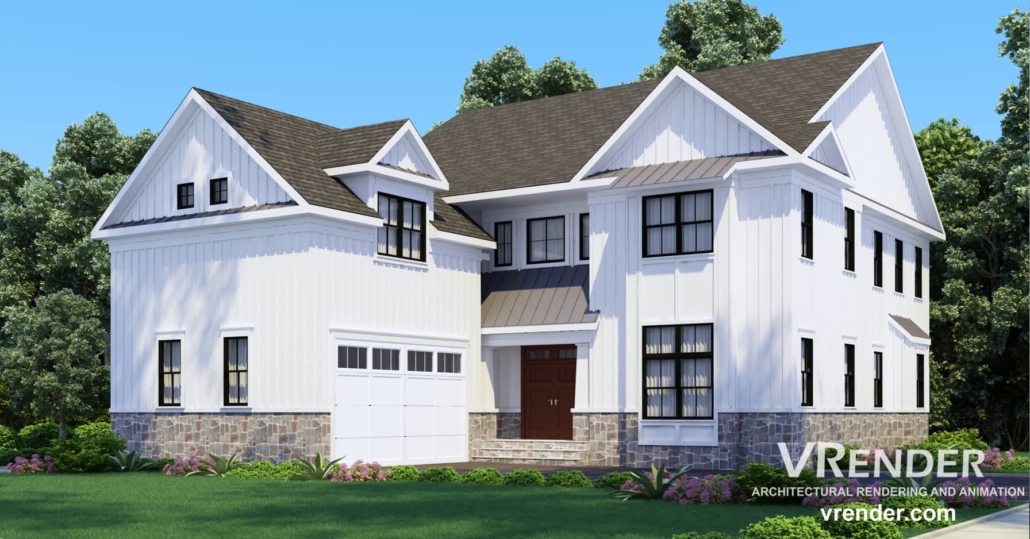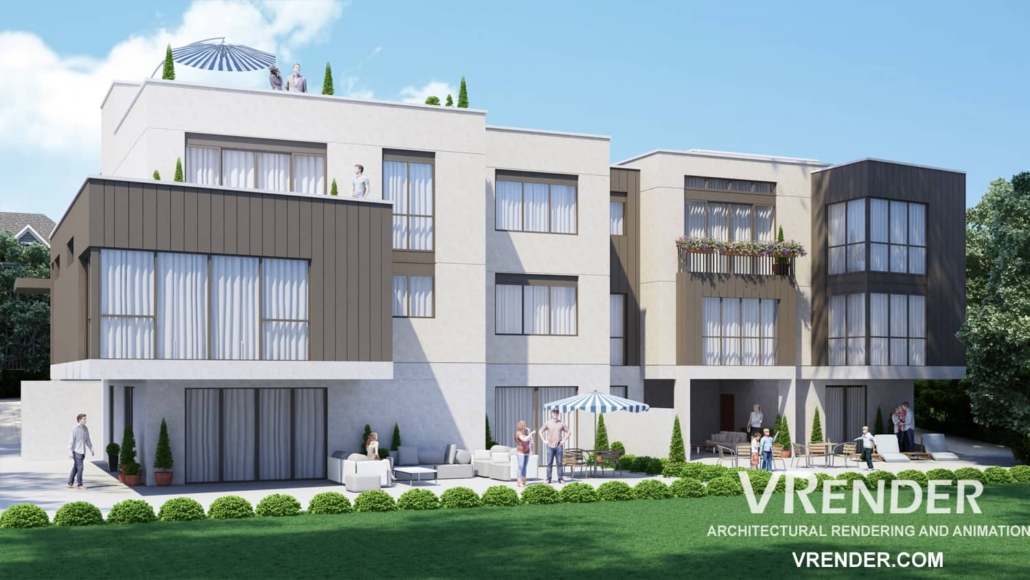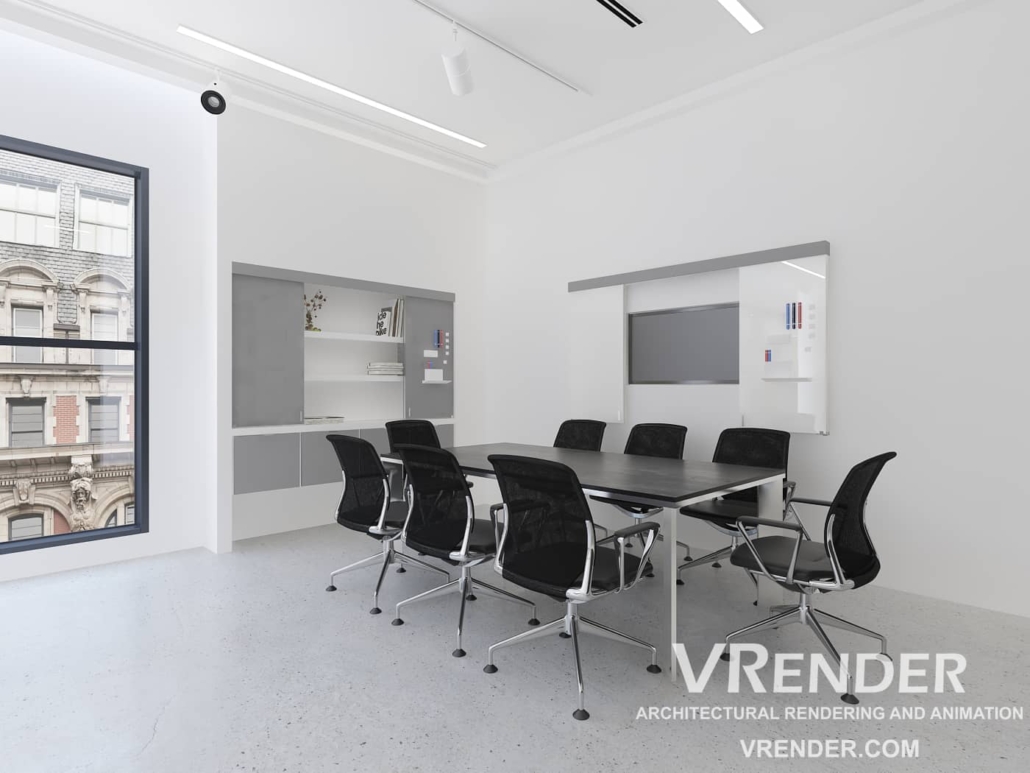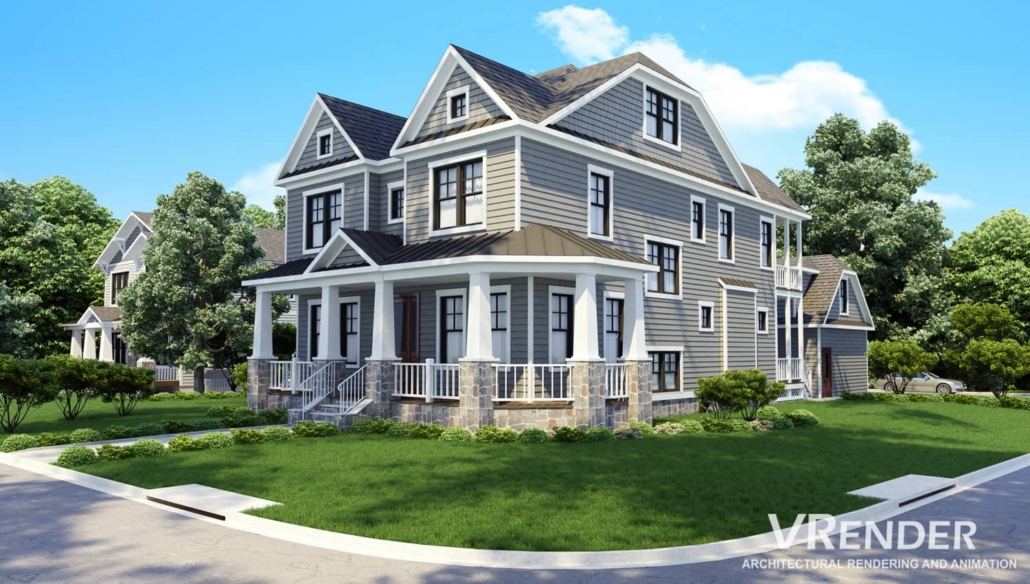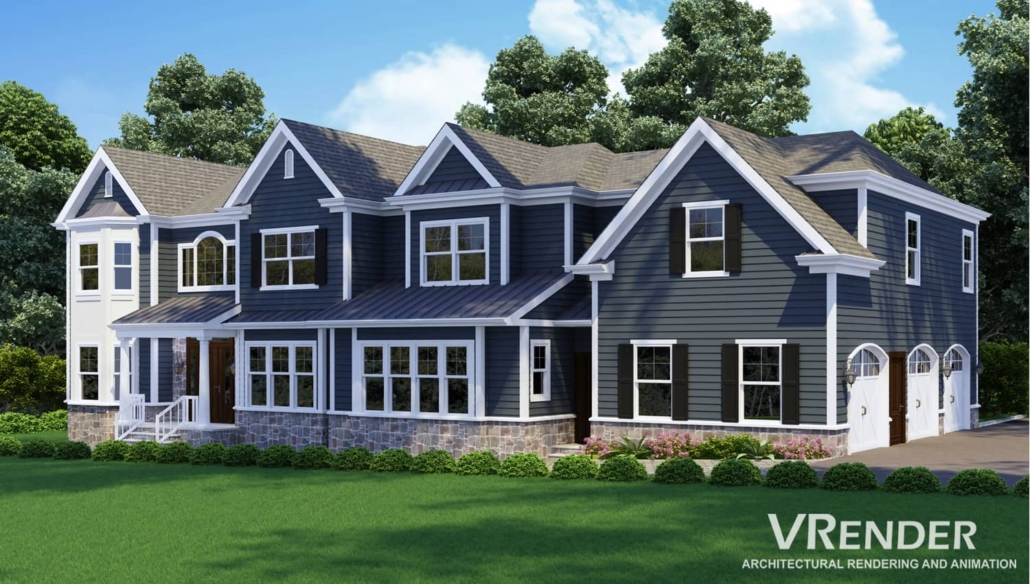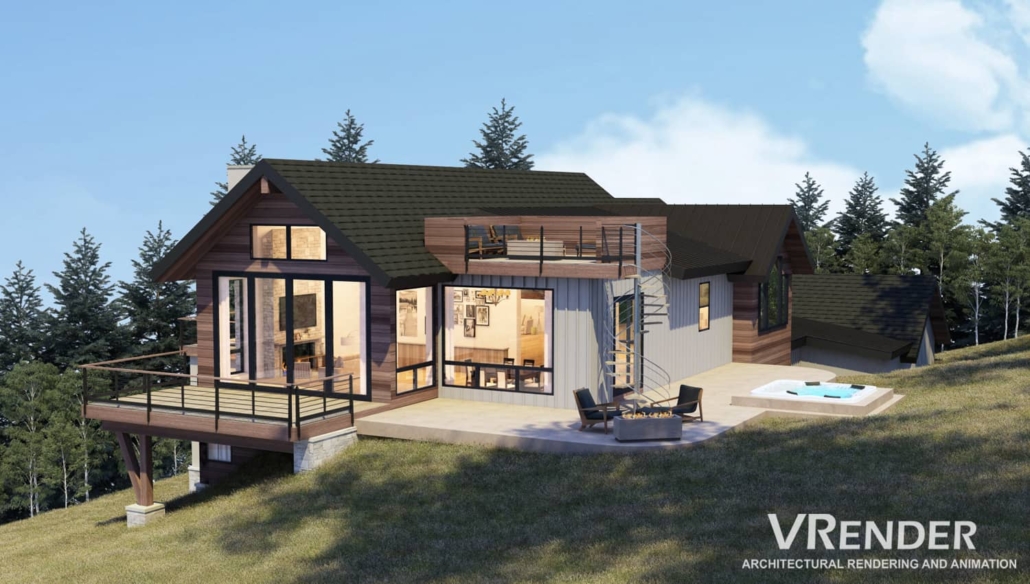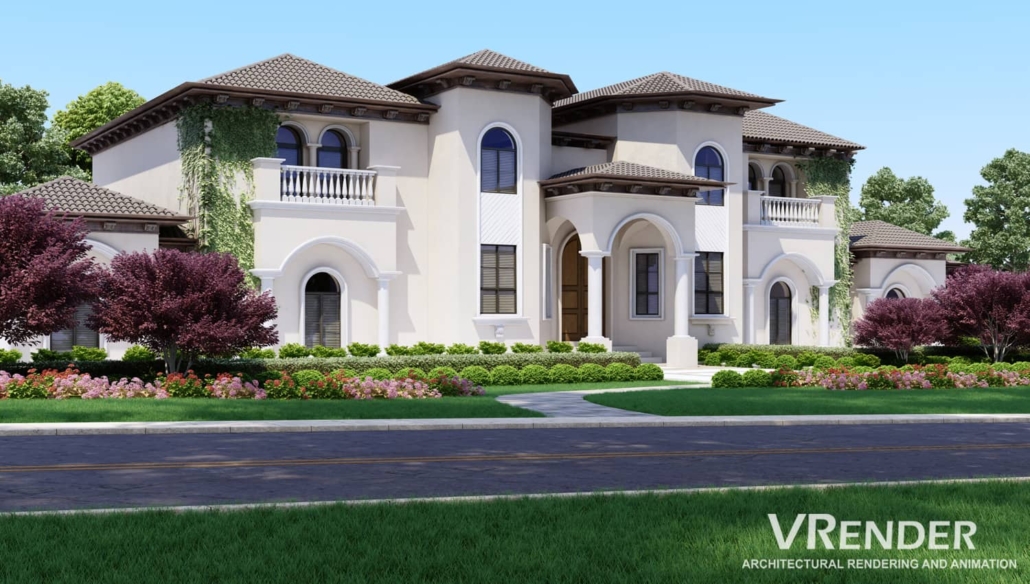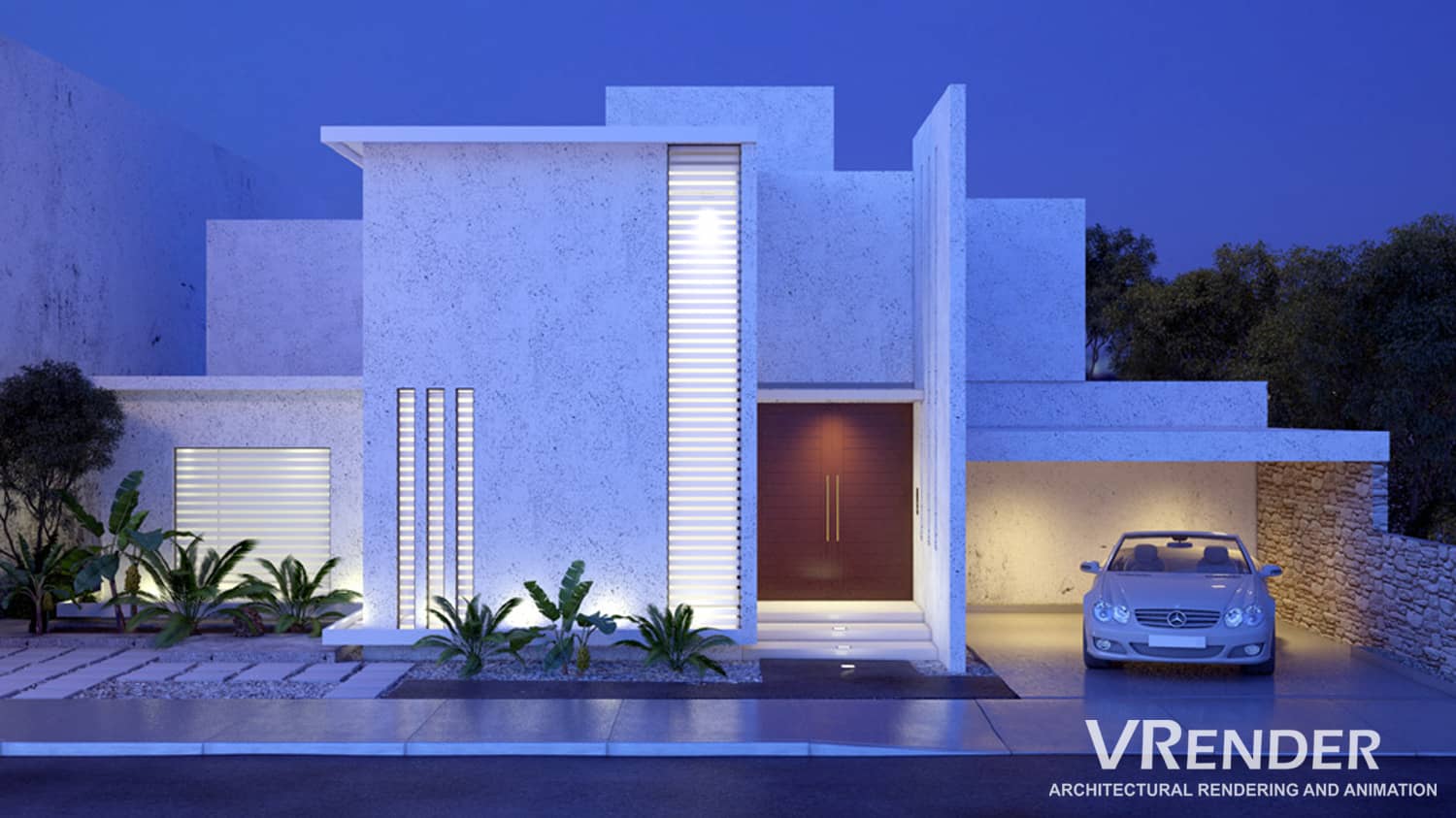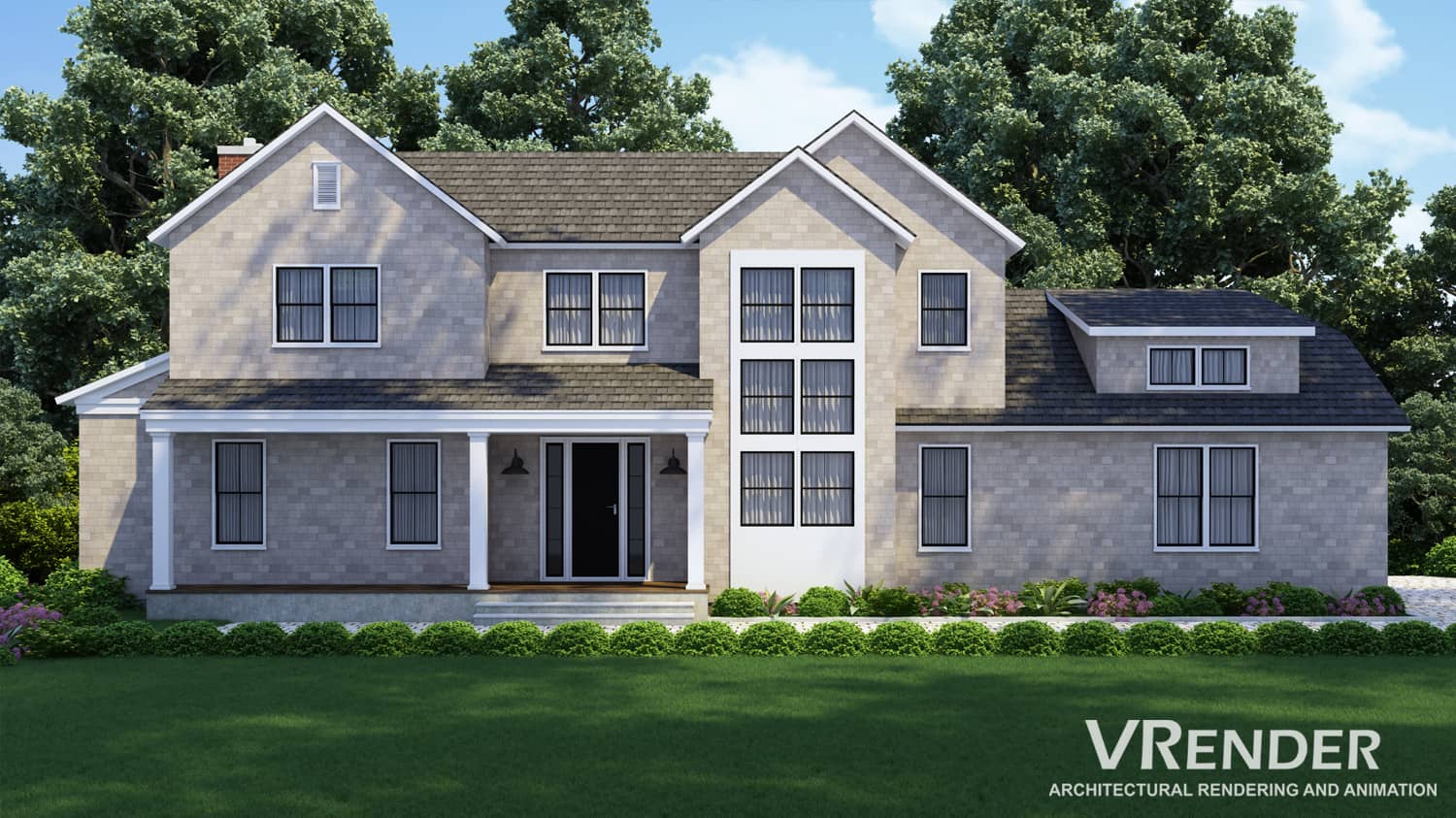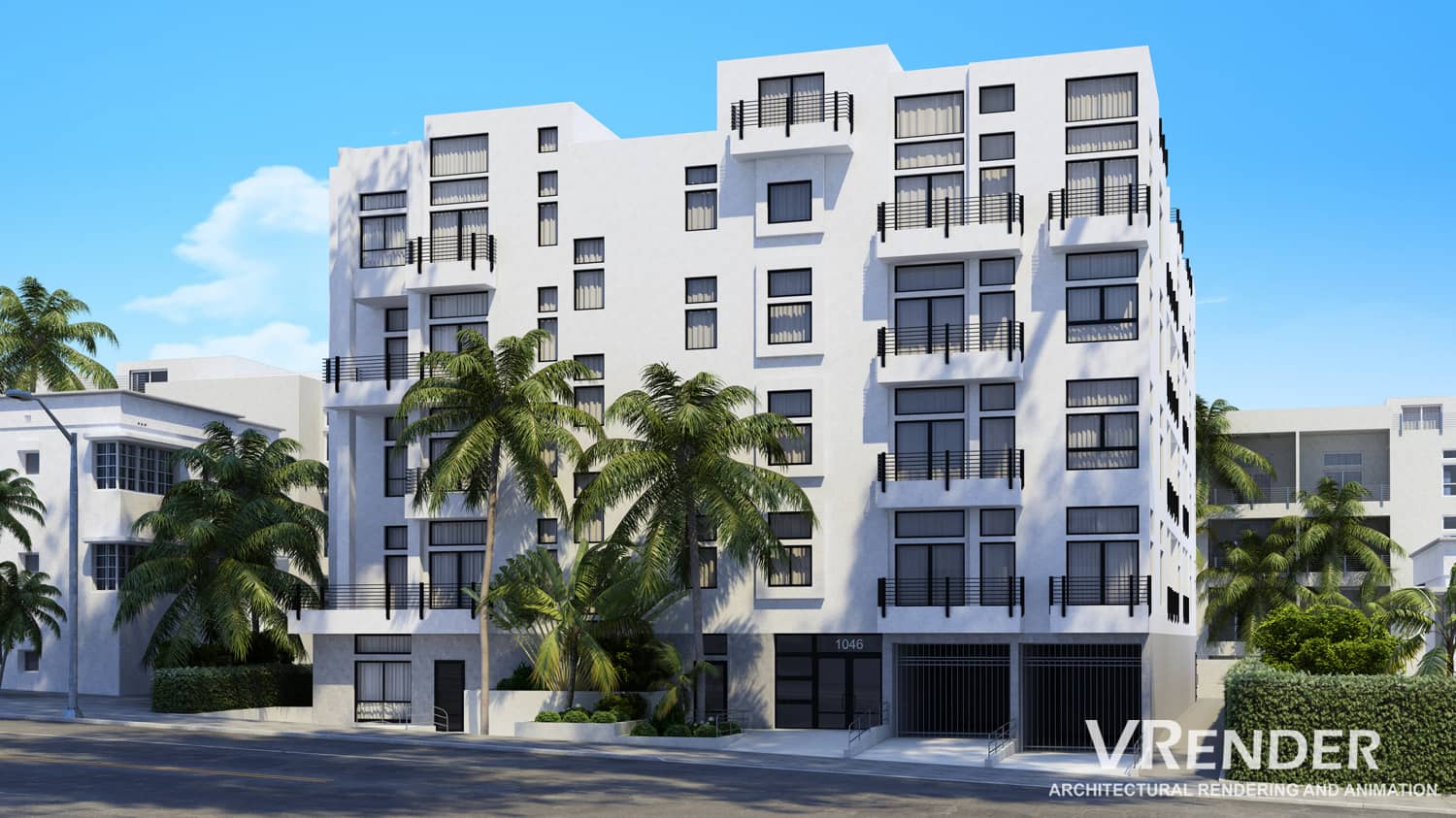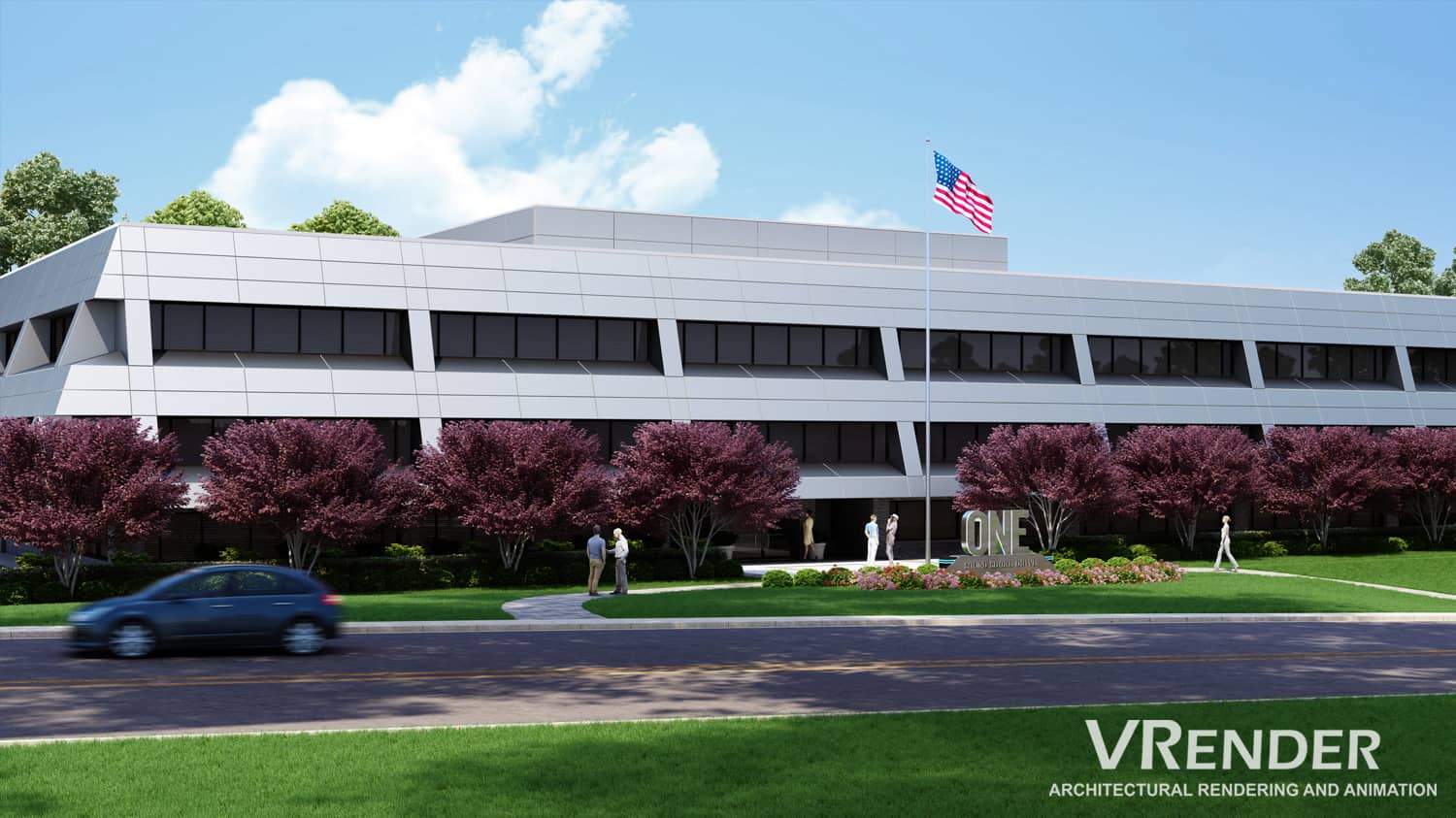3D exterior rendering services involve creating realistic and visually appealing 3D representations of exterior spaces, buildings, or architectural designs. These services are commonly used by architects, real estate developers, interior designers, and marketing professionals to showcase their projects in a visually impressive way. These services are often provided by 3D rendering companies, architectural visualization studios, or freelance 3D artists. 3D exterior renderings provide a detailed and lifelike view of how a building or property will look once it’s constructed, helping clients and investors better visualize the final outcome.
The process involves taking the 3D model of a building or a property and applying realistic textures, lighting, landscaping, and environmental elements to create a lifelike representation of how the exterior of the structure will look when completed. The goal is to produce images that are virtually indistinguishable from actual photographs.
Here’s an overview of the steps involved in photorealistic 3D exterior rendering:
- 3D Modeling: The process starts with creating a 3D model of the exterior structure. This can be done based on architectural plans, CAD drawings, or even through 3D scanning of existing buildings.
- Texturing: Realistic textures are applied to the 3D model, including materials for walls, roofs, windows, doors, and other elements.
- Lighting: Proper lighting is crucial for achieving photorealism. Different light sources are added to the scene, and their effects on the materials are accurately simulated.
- Landscaping: Surrounding landscapes, gardens, trees, and other outdoor elements are integrated into the scene to provide context and improve overall realism.
- Environmental Elements: Weather conditions, time of day, and other atmospheric effects like rain, snow, fog, or sunlight are added to enhance the realism further.
- Rendering: The 3D scene is rendered using specialized software that calculates the lighting, shadows, and reflections to produce the final image.
- Post-Processing: After the rendering is complete, post-processing techniques are applied to further enhance the visual quality, color balance, and composition of the image.
Here are some key aspects and benefits of 3D exterior rendering services:
- Realistic Visualization: 3D rendering allows for the creation of highly realistic and accurate images, incorporating details such as materials, lighting, landscaping, and environmental factors to provide a true-to-life representation.
- Design Validation: Architects and designers can use 3D exterior renderings to validate and refine their designs before construction begins. This can help identify potential issues and make necessary adjustments to achieve the best possible results.
- Marketing and Sales: Real estate developers and marketing professionals can use 3D exterior renderings to market properties effectively. These visually appealing representations can attract potential buyers or investors, increasing sales and interest.
- Cost-Effective: 3D exterior rendering services can be more cost-effective compared to traditional methods of constructing physical models for each design iteration.
- Time-Saving: Renderings can be generated relatively quickly, allowing for faster decision-making and project progress.
- Customization: Clients can request specific details and design elements to be incorporated into the rendering, tailoring the visual representation to their requirements.
- Multiple Perspectives: 3D exterior renderings can showcase a design from various angles, offering a comprehensive view of the project and its surroundings.
Photorealistic 3D exterior rendering services are widely used in the architecture and real estate industries to visualize and market properties before they are built. These high-quality visuals help clients, investors, and stakeholders get a realistic feel of the finished project and make informed decisions based on the visual representation.
When seeking 3D exterior rendering services, it’s essential to choose a reputable and experienced 3D rendering company or professional. Look for portfolios and reviews to ensure the quality of their work aligns with your expectations. Additionally, be clear about your project requirements, timelines, and any specific details you want to include in the renderings. This will help the rendering team deliver the best possible results for your project.
Vrender Company 2023.

